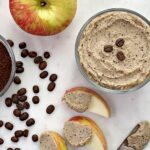 Halloween is festive and fun, but the ingredient lists of Halloween candy is actually scary! Trans fats, corn syrup, food coloring and artificial flavors galore.
Halloween is festive and fun, but the ingredient lists of Halloween candy is actually scary! Trans fats, corn syrup, food coloring and artificial flavors galore.
In addition to artificial and harmful ingredients, candy intake tends to put most people over the recommended daily limit for sugar. The American Heart Association recommends that women get no more than 100 calories a day from added sugar from any source, and that most men get no more than 150 calories a day from added sugar. That’s about 6 teaspoons of added sugar for women and 9 teaspoons for men. In terms of candy, 1 Snickers OR 1/2 a bag of Skittles equals the recommended total daily limit for sugar.
I have compiled a list of popular Halloween candy broken down in 2 categories: candies that contain trans fats and candies that do not. The ingredients listed in red is the trans fats. Ingredients listed in orange are unhealthy and should be avoided.
The worst offenders are the candies that contain trans fats. Trans fats have been hydrogenated, meaning they were created in an industrial process of adding hydrogen to liquid vegetable oils. These fats are twice as difficult for the body to dissolve as saturated fats. Trans fats raise “bad” (LDL) cholesterol and triglycerides and have been shown to decrease good (HDL) cholesterol, they’re active agents of heart disease, diabetes, nutritional deficiencies and cellular deterioration. These fats also increase your risk of blood clots and heart attack. Here is a list of candies that contain trans fats:
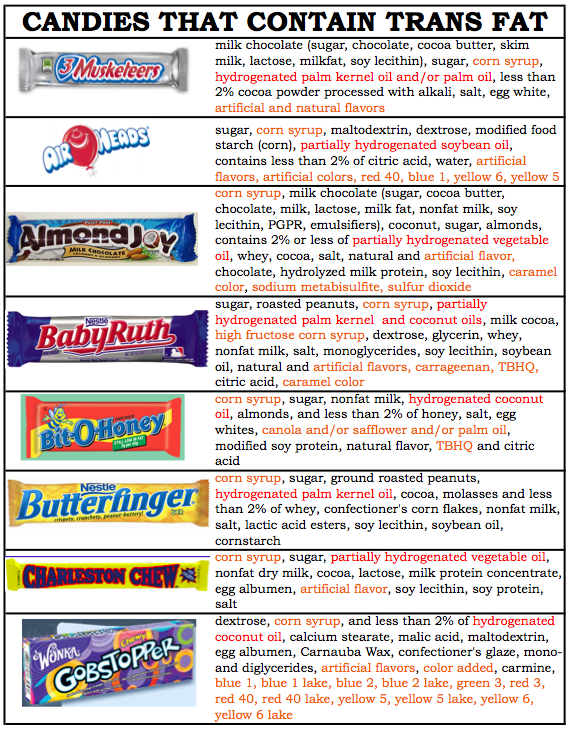
High-Fructose Corn Syrup: Research has shown that high-fructose corn syrup is chemically similar to table sugar. There is controversy over whether or not the body handles high-fructose corn syrup differently than table sugar. At this time, there’s insufficient evidence to say that high-fructose corn syrup is any less healthy than other types of sweeteners. However, there it is known that too much added sugar, not just high-fructose corn syrup, can contribute unwanted calories that are linked to health problems, such as weight gain, type 2 diabetes, metabolic syndrome and high triglyceride levels. All of these boost your risk of heart disease.
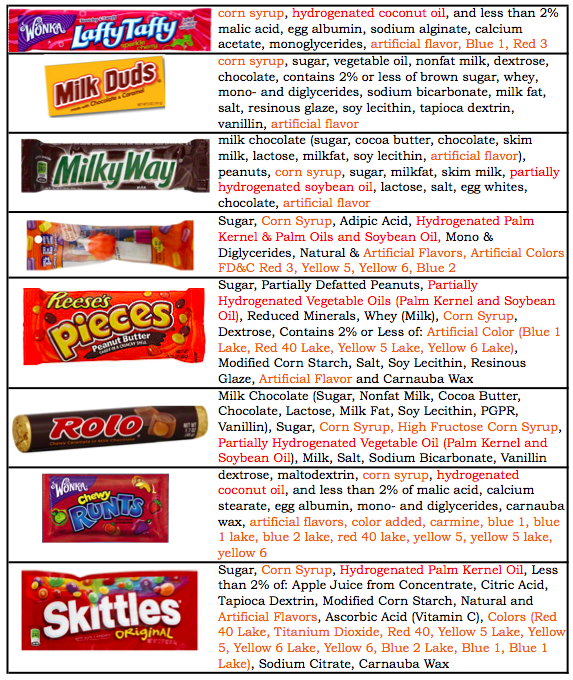
Artificial Colorings: Chemical compounds made from coal-tar derivatives to enhance color. They are linked to allergic reactions, fatigue, asthma, skin rashes, hyperactivity, headaches, and even cancer. The artificial colors blue 1 and 2, green 3, red 3, and yellow 6 have been linked to thyroid, adrenal, bladder, kidney, and brain cancers.
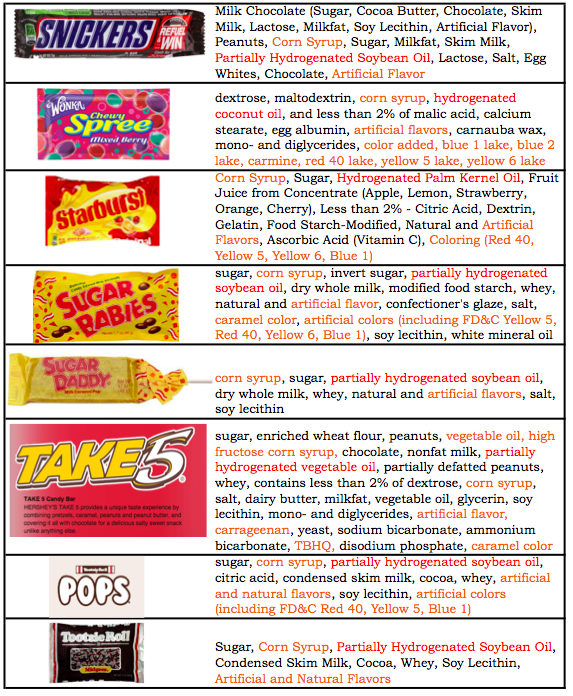
Carrageenan: A commonly used food additive, is an indigestible polysaccharide that is extracted from red algae, and is most commonly used in food as a thickener or stabilizer. Although derived from a natural source, carrageenan appears to be particularly destructive to the digestive system, triggering an immune response causing inflammation, gut irritation, lesions, and even cancer. While organic foods ban the use of GMOs, chemical pesticides, and toxic synthetic additives, carrageenan is currently still allowed so it important to check food labels. For more information check out my previous post on carrageenan.
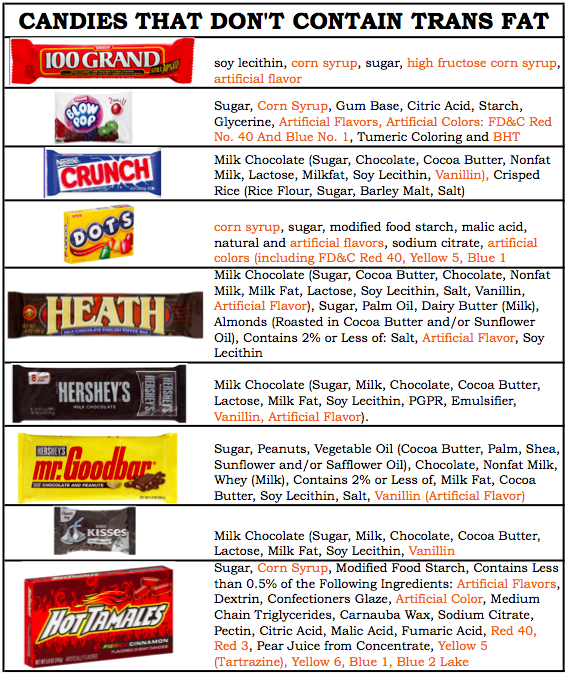
TBHQ (Tert-Butylhydroquinone): This preservative prevents rancidity. It is sometimes used along with similar preservatives, including BHA, BHT, and propyl gallate. (TBHQ is chemically related to BHA and forms when BHA is metabolized by the body.) Consuming high doses (between 1 and 4 grams) of TBHQ can cause nausea, delirium, collapse, tinnitus (ringing in the ears), and vomiting. There are also suggestions that it may lead to hyperactivity in children as well as asthma, rhinitis and dermatitis.
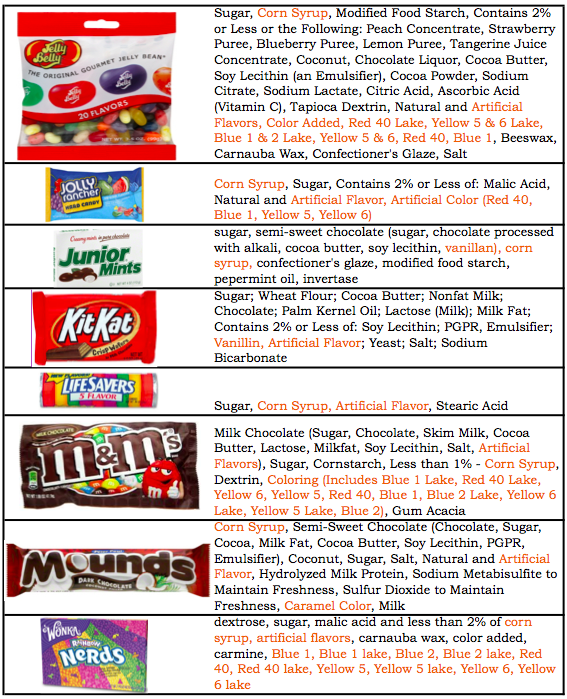 Caramel Coloring: Made by heating a sugar compound (usually high-dextrose corn syrup), often together with ammonium compounds, acids, or alkalis. Caramel coloring, when produced with ammonia, contains contaminants, 2-methylimidazole and 4-methylimidazole. In 2007, studies by the U.S. National Toxicology Program found that those two contaminants cause cancer in male and female mice and possibly in female rats. In 2011, the International Agency for Research on Cancer, a division of the World Health Organization, concluded that 2- and 4-methylimidazole are “possibly carcinogenic to humans.
Caramel Coloring: Made by heating a sugar compound (usually high-dextrose corn syrup), often together with ammonium compounds, acids, or alkalis. Caramel coloring, when produced with ammonia, contains contaminants, 2-methylimidazole and 4-methylimidazole. In 2007, studies by the U.S. National Toxicology Program found that those two contaminants cause cancer in male and female mice and possibly in female rats. In 2011, the International Agency for Research on Cancer, a division of the World Health Organization, concluded that 2- and 4-methylimidazole are “possibly carcinogenic to humans.
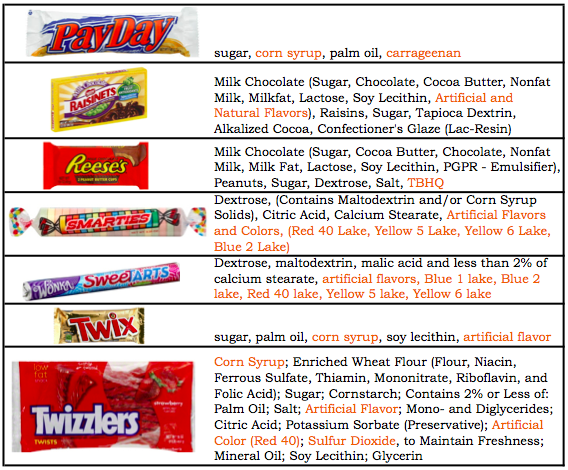
Sulfur additives (Sulfur Dioxide and Sodium Bisulfite): These are found to be toxic. The Federal Drugs Administration (FDA) has prohibited their use on raw fruit and vegetables. Adverse reactions include: bronchial problems particularly in those prone to asthma, hypotension (low blood pressure), flushing tingling sensations or anaphylactic shock. Sulfur additives also destroy vitamins B1 and E. The International Labour Organization says to avoid E220 if you suffer from conjunctivitis, bronchitis, emphysema, bronchial asthma, or cardiovascular disease.
I do believe that everything in moderation is okay. But, before grabbing a handful of “fun size” treats think about what you are putting into your body and be mindful of your portioning.



